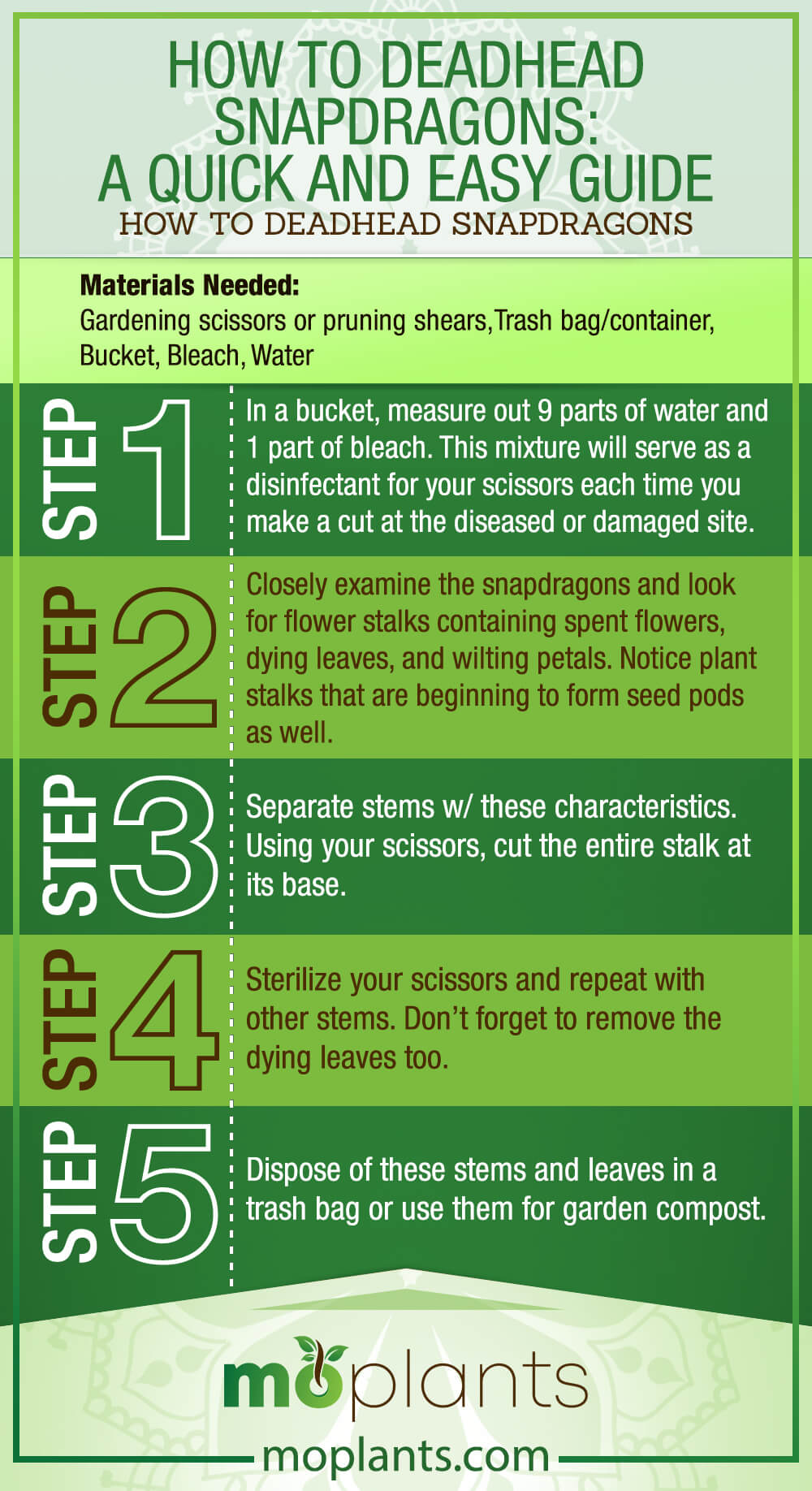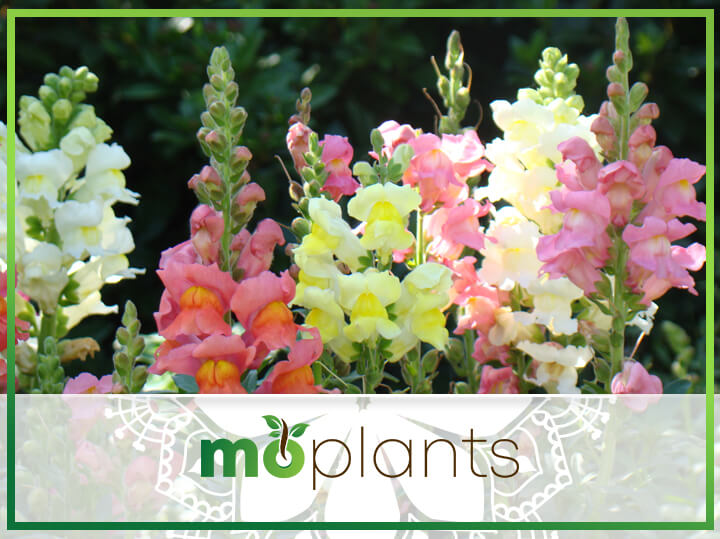Snapdragons naturally grow beautiful flowers in your garden, but if you want bright blooms all throughout the season, then you’ll have to care for them properly too.
This is where deadheading comes in.
A gardening term for the removal of aging flowers from plants, deadheading encourages the formation of new blossoms—this not only improves the overall aesthetic of your garden but also keeps your snapdragon plants healthy!
About Snapdragons
Have you ever wondered where snapdragons (Antirrhinum majus) get their name? Well, when the plant blooms, it produces flower spikes that look like dragons’ heads!
Because snapdragons are annual plants, they’re known to be bright and showy.
In fact, these flower stalks grow tall and come in a wide range of colors, including pastel pink, sunny yellow, pure white, and scarlet red.
Now, in terms of size, there are four types: Dwarf (4-9 inches tall), Short (9-12 inches tall), Intermediate (12-24 inches tall), and Tall (24-36 inches tall).
Intermediate snapdragons are the ones commonly found in gardens, but the dwarf and short varieties are particularly striking in containers, small beds, and window boxes.
To start them from seed, sow them indoors two months before the last frost. This way, as soon as the weather permits, you can transfer them outdoors and immediately transplant them into the soil.
They’re very easy to grow, as they thrive in full sun or light shade.
However, make sure that you choose a well-draining soil so that it’s not susceptible to overwatering. In addition, it’s best to purchase rust-resistant varieties as some types can succumb to mold, fungus, mildew, and rust.
Although the plant starts growing flowers from early summer until fall, it will wither away come winter. Fortunately, you can easily replant a new batch after the last frost and enjoy its colorful blossoms for another year.
To get the most out of this plant, regular deadheading is a must. Although it may feel like a chore, you’ll be rewarded with continual flowering and a healthier snapdragon plant overall.
How to Deadhead Snapdragons
Materials Needed:
- Gardening scissors or pruning shears
- Trash bag/container
- Bucket
- Bleach
- Water
Steps:
- In a bucket, measure out 9 parts of water and 1 part of bleach. This mixture will serve as a disinfectant for your scissors each time you make a cut at the diseased or damaged site.
- Closely examine the snapdragons and look for flower stalks containing spent flowers, dying leaves, and wilting petals. Notice plant stalks that are beginning to form seed pods as well.
- Separate the stems with these characteristics. Using your scissors, cut the entire stalk at its base.
- Sterilize your scissors and repeat with other stems. Don’t forget to remove the dying leaves too.
- Dispose of these stems and leaves in a trash bag or use them for garden compost.
Infographic

Other Tips and Reminders
- If you notice many spent flowers, it may be easier to shear back the plant (up to about a third of its original height) instead of cutting each stem individually.
- To prevent the snapdragons from going to seed, deadhead regularly, at least once or twice a week. Whenever you notice seed pods forming, deadhead immediately. More deadheading allows the plant to grow fresh, new blossoms.
- Once a snapdragon flower starts to form seed heads, it puts all of its energy towards producing seeds instead of blossoms. That’s why it’s important to remove them from the plant quickly, especially if you want to maintain the look of your garden.
- Want snapdragons next year? Let them bear seeds, so that they’ll scatter around your garden. Afterward, trim the plant back to six inches or shorter.
- If you want snapdragons for your flower arrangements, you can cut off the stems once its blooms have just opened. This will ensure they last longer, plus they’ll encourage your snapdragon plants to grow more flowers as well!
- If you’re experiencing any other problems, don’t hesitate to consult a professional gardener. He/she can give you extra information and/or provide additional services if needed.
Final Thoughts
Now that you have all the information you need to take care of your snapdragons, get to deadheading right away!
In time, you may even find that you enjoy this routine of caring for your plants—especially when you’re rewarded with beautiful flowers come summertime. Happy gardening!

